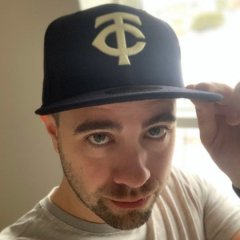
Twins Video
By Phil Miller:
High velocity is a tremendous weapon, and a knee-locking changeup can win a lot of games. But Eddie Guardado, who knows something about relief pitching, believes the best closers possess an attribute that is more important than anything that can be measured by StatCast.
“If you’re the closer, you’ve got to have [guts],” Guardado said, though he used more vivid language to make his point. “You can’t be afraid to throw your pitches, no matter the situation. It’s hard for some guys to learn that, because it really comes from inside you.”
Guardado should know. In five seasons as a Twins’ closer, he never threw a pitch in the mid-90s, and never had a breaking ball that made a batter flinch. But by changing speeds, moving locations and directions, and especially throwing strikes no matter what, he saved 152 games for a team that won three division titles, including an AL-leading 45 in 2002. Guardado, the Twins’ bullpen coach since 2015 [editor's note: Guardado was dismissed from the gig shortly after the Handbook's release], says he frequently sees closers who don’t have the, um, physical attribute necessary for the job.
“You ever see a pitcher put guys on base in the ninth [inning], and he looks like he has no idea what to throw next? That’s how you know he’s not a closer,” Guardado scoffed. “A closer tells himself, ‘you got lucky.’ Even if he loses.”
But if it sounds like Guardado recognizes few pitchers with the cojones to preserve wins, the opposite is actually true. Too many teams limit their search for closers to pitchers who do little but throw 96-mph fastballs, the Twins Hall of Famer said. But Minnesota’s recent history illustrates that capable closers — like Everyday Eddie — sometimes come in far different packaging.
“Look at Brandon Kintzler — he was a guy who had a really good sinker, and a couple of so-so pitches. Nobody ever gave him a chance to close. He didn’t even make our team out of spring training” in 2016, Guardado said. “But when we needed someone to close games that year, he learned the mentality — slow it down, take your time, trust your stuff. He picked it right up because he wasn’t afraid,” and even made the AL All-Star team in 2017.
Kintzler is the best example of the Twins’ recent history of revolving closers. While some teams spend millions on established save leaders — Aroldis Chapman got $86 million over five seasons from the Yankees, Wade Davis was guaranteed $51 million by the Rockies, and Craig Kimbrel, finishing up a $42 million contract with the Red Sox, figures to get even more this offseason — the Twins have mostly filled the job by training non-closers to do it.
That’s a history that goes back to Joe Nathan, the best closer in Twins’ history, who was a marginally successful starter and middle reliever for the Giants until being traded to Minnesota. After elbow surgery ended Nathan’s career, the Twins turned to another former starter, Glen Perkins, and watched him become an All-Star, too. An injury also eventually derailed Perkins’ career, and the Twins appointed Kevin Jepsen their closer, then Kintzler, and then Matt Belisle.
***
Want to read the rest of this story, and 70 pages of in-depth analysis of the offseason that’s about to get underway? Claim your copy of the 2019 Offseason Handbook, at a price of your choosing, and you’ll receive it right away.
MORE FROM TWINS DAILY
— Latest Twins coverage from our writers
— Recent Twins discussion in our forums
— Follow Twins Daily via Twitter, Facebook or email
— Become a Twins Daily Caretaker






Recommended Comments
Join the conversation
You can post now and register later. If you have an account, sign in now to post with your account.
Note: Your post will require moderator approval before it will be visible.